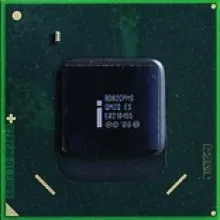
The Intel® Q67 Express Chipset is a part of the Intel 6 Series Chipset family designed for business-oriented desktop systems, providing advanced features for manageability, security, and performance. Compatible with second-generation Intel Core processors, the Q67 chipset is tailored for corporate environments where stability and security are paramount.
One standout feature is Intel® Active Management Technology (AMT), facilitating remote management and diagnostics of desktop systems. IT administrators can maintain and troubleshoot systems efficiently, even when the operating system is inactive or the system is powered off.
Security is reinforced through Intel® Trusted Execution Technology (TXT), creating a secure execution environment by isolating critical operations from potential malware threats. This technology enhances overall system integrity, a crucial aspect for safeguarding sensitive corporate data.
Intel® Virtualization Technology (VT-x) is integrated into the Q67 chipset, optimizing performance in virtualized environments. This technology is particularly valuable for businesses leveraging virtualization for server consolidation, resource optimization, and efficient deployment of virtual machines.
Storage capabilities include Serial ATA (SATA) 3Gb/s interfaces, supporting a range of storage devices such as hard disk drives (HDDs) and solid-state drives (SSDs). RAID configurations are also supported, contributing to data protection and reliability.
The Q67 chipset incorporates Intel® Flexible Display Interface (FDI), allowing flexible connectivity to integrated graphics. This supports multiple displays, catering to professionals who require expansive desktop real estate for increased productivity.
Additionally, the Q67 chipset adheres to the Intel® Stable Image Platform Program (SIPP), ensuring a stable platform for a predetermined duration. This is particularly beneficial for businesses seeking consistency and reliability in their desktop infrastructure.

